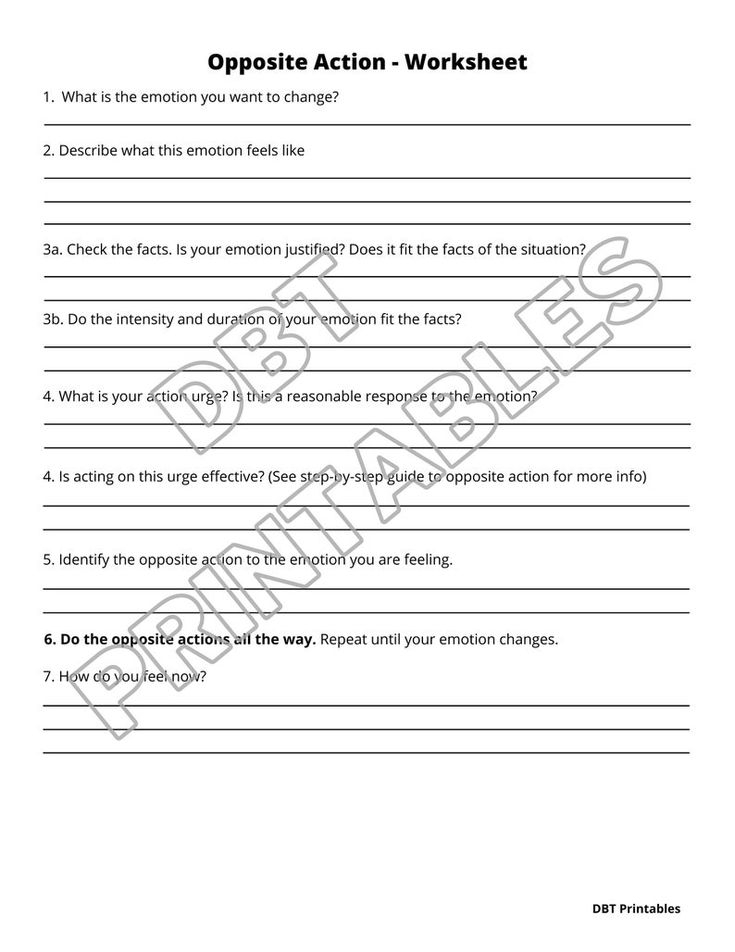Opposite action is a technique often used in dialectical behavior therapy (DBT) to help individuals change their emotional responses by acting opposite to their initial impulses. This can be especially helpful for those struggling with intense emotions such as anger, anxiety, or sadness. By practicing opposite action, individuals can learn to regulate their emotions and make more effective choices in managing their feelings.
One way to practice opposite action is through the use of a worksheet. This worksheet can help individuals identify their initial emotional response, challenge their thoughts and beliefs, and choose a different course of action that aligns with their long-term goals and values.
When using the opposite action worksheet, it is important to first identify the emotion you are feeling and the impulse you have to act in a certain way. Then, challenge the thoughts and beliefs that are driving this impulse. Ask yourself if this action is in line with your values and if it will help you achieve your goals in the long run.
Next, consider what the opposite action would be in this situation. For example, if you are feeling angry and have the impulse to yell at someone, the opposite action may be to take a deep breath and calmly express your feelings. Practice this new action and observe how it affects your emotions and the situation as a whole.
As you continue to use the opposite action worksheet, you may start to notice a shift in your emotional responses and behaviors. By consistently practicing opposite action, you can develop healthier coping mechanisms and improve your ability to regulate your emotions in challenging situations.
Remember, change takes time and practice, so be patient with yourself as you work through the opposite action worksheet. Celebrate your progress and continue to challenge yourself to act opposite to your initial impulses in order to create positive change in your life.
